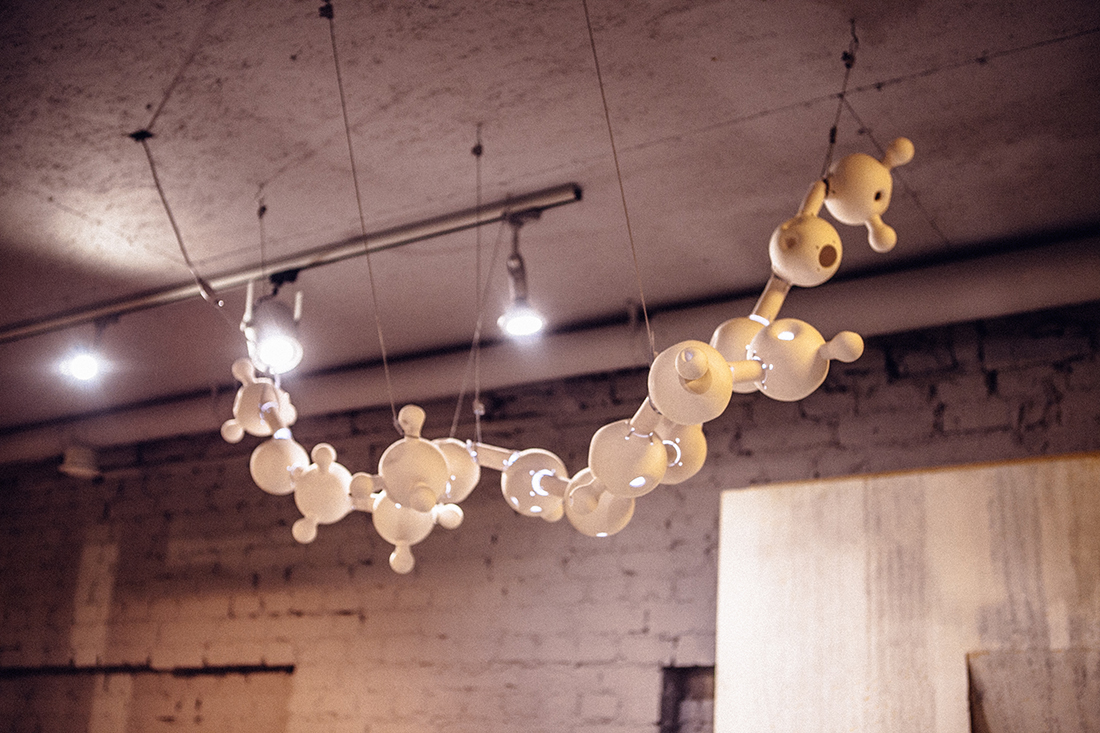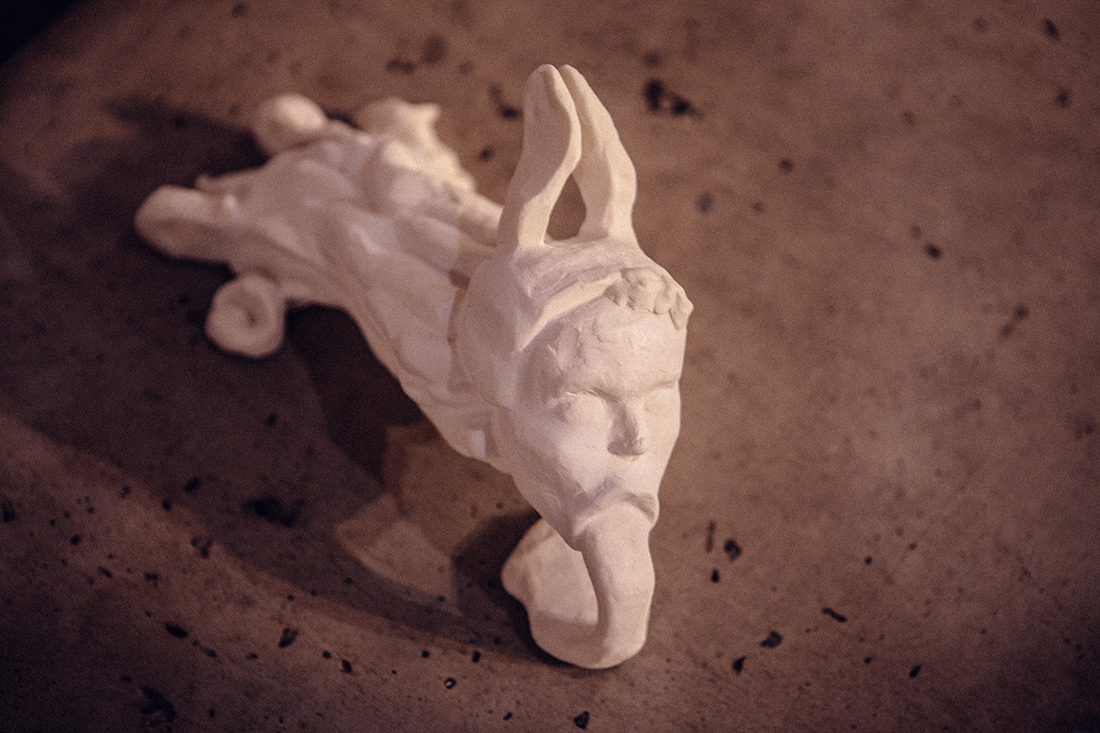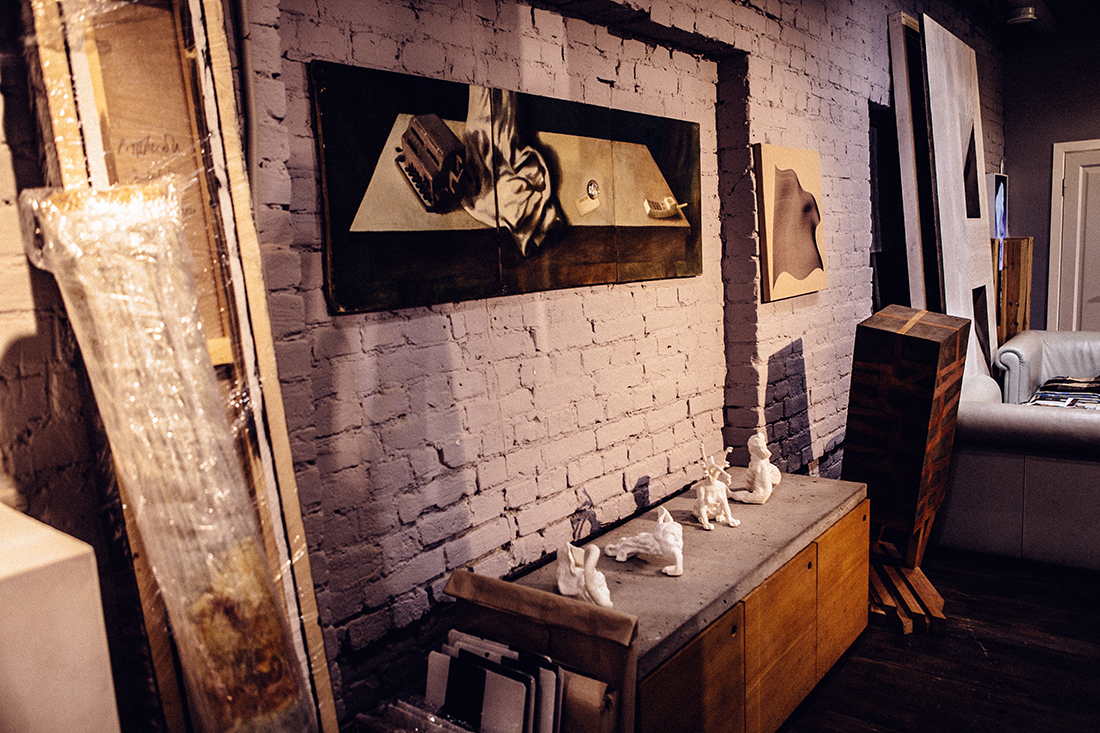16 Feb Marina Shcherbenko: “Don’t give up, don’t stop, keep evolving!”
Marina Shcherbenko is one of those people who are not afraid of difficulties, even those of Ukrainian art. We spoke to her about finding your vocation and letting it make your and other people’s dreams come true.
Marina, you literally built Shcherbenko Art Centre with your own hands, you were fully involved in this difficult process. Besides, you have been working with Ukrainian art for quite a while. What is driving you? It’s a kind of a challenge, since there’s no support from the government for such work.
There’s a story behind every person. Art has been around me my entire life. As a child, I used to draw on everything – on the eraser, on the copybooks’ margins, on the covers of books and albums. I graduated from an art school. But it was only 10 years ago when I made my comeback to the professional community of contemporary art. That’s when I came up with the idea of opening my own art gallery.
Apparently, everyone has a limit of improvement. I consider myself to be a person who keeps raising the bar of personal development; I pay special attention to developing taste. My entire life, as I grow older in constant contact with art, I see, I feel, I hear, I read, and I create. I keep falling in love with art, and my taste becomes more sophisticated. So now I am a self-sufficient person. I have found my purpose in work that makes me feel comfortable and lets me take advantage of it for self-fulfillment.
Gallery management and curatorship in the field of Ukrainian contemporary art are always somewhere between business and altruism. Thus, Shcherbenko Art Centre is a kind of a hybrid: we organize exhibitions, projects, lectures, discussions, competitions, and programs for kids, we publish catalogues and books, support young artists etc. What I do is not just business. The world of Ukrainian contemporary art is simple and complicated at the same time. Sometimes I feel discouraged when I realize that despite all my efforts I failed to change anything. In fact, the institutions that I established have been constantly growing and evolving, and my current interests in art are very different from those I had when first started working in this field.
I always rely on my strength and my resources first, but, of course, it’s very important to find additional support for projects from patrons, sponsors and collectors. Besides, building up trustworthy business relations is a delicate, personal process. As you said, there’s no state support… but we depend on it! This is where we live and work, so we can’t just shake local problems off. That’s why we bring up current public issues in our socio-critical works. It’s not always visually attractive, and it’s even repellent for naïve audience.
Do you personally choose artists and carry out all negotiations, or delegate it to your team?
I’m dealing directly with the artists and partially delegate project coordination to my team, depending on their responsibilities. Shcherbenko Art Centre works in several directions, mainly focusing on supporting young artists, creating discussion platforms, organizing educational programs. Displaying art is only one of our fields of expertise. Our mission is development of Ukrainian contemporary art. In this regard, I should mention MUHi – the competition for young Ukrainian artists that was launched in 2009, when Bottega Gallery was actively working. It developed into a solid, well-known competition. MUHi is a chance for serious, aspiring young artists to compete, as well as to begin working on own CV, find a staring point for growth. This year we’re holding MUHi-2017, which we have been preparing since last year. Two prominent experts have already confirmed their participation in our international jury: Gunnar Kvaran – director of Astrup Rearnley Museum for Contemporary Art in Oslo, ex-director of Reykjavik Art Museum (1989-1997), ex-director of Bergen Art Museum (1997-2001, Nowray), commissioner and curator for the Icelandic pavilion at the Venice Biennale in 1984, 1986, 1988, 1990; and Marek Pokorný – art critic and curator, director of PLATO Gallery in Ostrava (Czech Republic), ex-director of the Moravian Gallery in Brno and curator for the Czech (2006) and Slovak (2013) pavilions at the Venice Biennale. In March we will be collecting applications from young Ukrainian artists, and in November we will be holding an exhibition of the nominees.
Do you mean that you’re technically capable of providing an artist with an exhibition space, a studio and materials?
You’re simplifying it a bit. Collaboration with every artist requires individual approach. We let a viewer meet an artwork which is a complex of components: intellectual, critical, social, aesthetic, financial, conceptual, autobiographical etc. We prepare the project, then – its opening, invite visitors and let them interact with the pieces of art, because that’s what displaying art is all about. Art cannot exist without this meeting, otherwise it’s just ephemerality – art for the sake of art. Contact with art may be accidental, but we work systematically, and it’s a key tool to create every single artist’s brand (name).
I know that you’ve got an educational program for children “History of Art Club”. What age group is your Club for?
It’s for children aged 8-11. This program and its methods were specifically adjusted for this age group; the children learn main art periods and the history of art in the creative atmosphere.
How long will this course be? How many children can apply? And how often will the lessons be?
This time we’re enrolling the first group of 10 children. If we have more applicants, we will make one more group with lessons at different time. Young school students usually take other extracurricular activities and attend sports trainings, so it’s convenient for them to join our course once a week – on Saturdays. It’s important that more and more parents today have the need to widen their children’s range of interests and let kids be more intelligent than their peers.
I would also like to mention the books you published. For example, the collection of Tiberiy Szilvashi’s essays. What a sensational book! Why are there fewer books on your shelves now?
We published the book “Tiberiy Szilvashi. Essays. Texts. Dialogues” after numerous years of our collaboration and holding several exhibitions and installation projects of Ukrainian artist and contemporary art theorist Tiberiy Szilvashi. We really enjoyed preparing this book for publishing, and now it’s sold in bookstores all over Ukraine and, of course, in the Shcherbenko Art Centre bookstore. A wide range of books on contemporary art theory, now-classic works of Clement Greenberg, Guy Debord, Rob Haskins, Caroline Cros etc. were translated into Russian and imported to Ukraine from Russia. Starting from January, we are no longer able to purchase books from Russia and have to sell out what is left on our shelves by April. This situation should encourage Ukrainian publishing houses to translate and issue essential literature on art, but its target audience in Ukraine is so narrow, I’m afraid it will need some support form patrons. That is why our shelves are almost empty. But we will find something to fill them with.
And what about taxes? As you remember, you must pay 25% tax acquiring a piece of art. For many years we’ve been waiting for the law on art patronage, which would be of use to artists, art galleries, art dealers…
Yes, we do need the art patronage law. It would solve many urgent problems of the whole field. Besides, it would be an optimal solution for the problem of supporting art for the authorities. I.e. if you can’t help, let others do it, don’t interfere. The current situation on the Ukrainian contemporary art market is more of a response to the general level of economy, humanitarian crisis, disappearance of the middle class, when the main potential consumer of contemporary art can’t afford to invest in art. In general, the problem is not in taxes, but in poverty. And artworks, art itself, is a secondary need after food, clothes, and shelter. And the next problem is the cultural level of Ukrainian elite that sets example for others. Ukrainian elite has always had “specific” taste, and ranked contemporary art, art in general, very low. Unfortunately, the situation hasn’t changed a lot. “Pshonka-style” still prevails in households. But hopefully it will change for the better.
There is one institution closer to government than others – it’s National Union of Artists. Basically, it’s a real estate fund, and not an active organization that produces senses and supports artists, including the young ones. Paradoxically, but it’s artists who were the driving force of the Maidan protests. So why can’t they unite to solve their art-related problems? Therefore, we have the Union of Artists, but artists are not united at all.
I guess that the Union of Artists is an outdated institution. From time to time artists unite in groups, and the main reason to do so is having the same opinion on art. As soon as there are conceptual and ideological splits, a group breaks up. “The Paris Commune”, “Scenic Reserve”, “Soska”, “REP”, “Open Group”, “Alliance 22” – these are the groups that played key role in shaping the history of Ukrainian contemporary art. Many artists that used to be the members of these groups are working independently now. It’s natural, because a successful artist is the one who primarily relies on own feelings, who works and evolves in the context of own views on the processes, current events in the world, presentiments, and associations. I have been working with artists for many years, and I understand why, as you said, they can’t unite – it’s practically impossible.
Finally, could you please give three pieces of advice to young artists who might be interested in participating in MUHi-2017, moving forward, implementing ideas, looking for a residence.
Guys, prepare your projects to apply for MUHi-2017 in March. This time, in addition to the prize, the winner will be given an opportunity to work in art residence in Europe in 2018. You will find more details on our website in March, when we announce the application period opening.
What’s my advice? Considering that there is no specialized education in contemporary art in Ukraine, pay more attention and time to self-education. Don’t give up, don’t stop, keep evolving. There are many opportunities. The Internet nowadays is a huge information environment, a part of our lives that overloads us with media noise, but at the same time lets us get alternative specialized education, e.g. online.
Find strength and desire to express yourself, don’t imitate other artists, search your own unique style.









